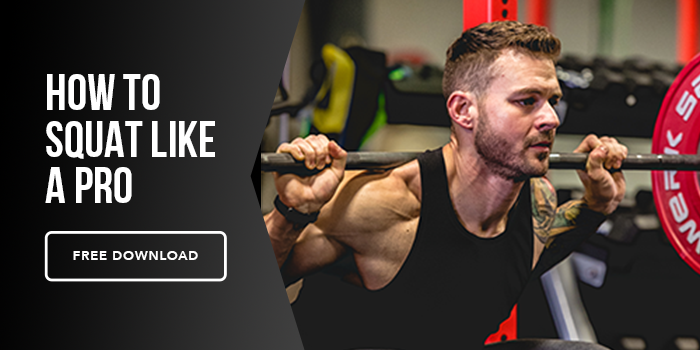For years, fat loss advice boiled down to "just do more cardio.” But like Sabrina Carpenter going from Disney Channel to global pop star whose songs I can’t get out of my head, exercise education has come a long way. People are starting to recognize weightlifting as the superior fat loss method. If you’ve been programmed to believe cardio is the golden ticket to getting lean, it’s time for a hard reset.
Here’s why picking up weights beats jogging in place when it comes to burning fat, shaping your body, and keeping weight off long-term.
1. Weightlifting Burns Calories Beyond the Workout
Cardio burns calories while you do it. Weightlifting? It burns calories long after you leave the gym.
This happens thanks to EPOC (Excess Post-Exercise Oxygen Consumption)—also known as the afterburn effect. Strength training creates more muscle damage than cardio, meaning your body spends extra energy repairing muscle tissue post-workout. That recovery process can keep your metabolism elevated for 24-48 hours.
Compare that to steady-state cardio, where your calorie burn drops back to baseline the second you stop moving.
2. More Muscle = A Higher Metabolism
Muscle is expensive tissue—it demands more calories to sustain itself than fat. The more muscle you have, the more calories you burn at rest.
Studies show that for every pound of muscle you gain, you burn an extra 6-10 calories per day. That may not sound groundbreaking, but let’s zoom out:
-
Gain 5 pounds of muscle → Burn an extra 300 calories per week doing nothing.
-
Gain 10 pounds of muscle → Burn an extra 600 calories per week. That’s a free meal.
Meanwhile, cardio does nothing for muscle retention. In fact, excessive cardio can actually pare down muscle, lowering your resting metabolism over time.
3. Weight Training Changes Your Body Shape (Cardio Doesn’t)
If you’ve ever lost weight but still felt "skinny fat," here’s why: cardio alone doesn’t sculpt your body—it just makes you a smaller version of your current self.
Weight training builds lean muscle, creating definition, shape, and that “toned” look most people want. You don’t get that from just running on a treadmill.
Put simply: Weight training transforms your physique. Cardio just shrinks it.
4. Strength Training Burns More Fat (And Less Muscle) Than Cardio
Weight loss and fat loss are not the same thing.
If you only do cardio while eating in a calorie deficit, your body will burn both fat AND muscle for energy. That means the number on the scale may drop, but your actual body fat percentage may not improve.
Strength training, on the other hand, signals to your body: "We need this muscle. Burn fat instead."
A study published in Obesity found that people who combined weight training with a calorie deficit lost significantly more fat (and preserved more muscle) than those who did cardio alone.
Cardio burns calories. Weight training burns fat. Big difference.
5. Lifting Weights Improves Insulin Sensitivity (Which Means Less Fat Storage)
Insulin gets a bad rap, but here’s the deal: the more insulin sensitive you are, the better your body is at using carbs for energy instead of storing them as fat.
Strength training increases insulin sensitivity, meaning your muscles soak up glucose more efficiently, leaving less excess energy to be stored as fat.
Compare that to steady-state cardio, which has little to no effect on long-term insulin sensitivity. If you want your body to process food better and store less fat, strength training is key.
6. Weight Training Strengthens Joints & Bones (Cardio Can Wear Them Down)
Running pounds your joints over and over again. Lifting weights strengthens them.
Studies show that resistance training increases bone density, reducing the risk of osteoporosis as you age. Meanwhile, excessive cardio can lead to stress fractures, knee pain, and overuse injuries.
In other words, if you want to move pain-free for years to come, lifting weights is the better investment.
7. The Best Strategy? Lift Weights First, THEN Do Cardio
This doesn’t mean cardio is useless—it just shouldn’t be your only fat loss strategy. The best approach? Prioritize strength training and use cardio as a tool, not the foundation.
If you want to combine both:
-
Lift weights first, then do cardio. This ensures you have maximum energy for strength training.
-
Stick to short, high-intensity cardio (like sprints or incline walking) to train maximum output and do slow, steady-state cardio to train overall cardiovascular health.
Want to lose fat and keep it off? Cardio can help — but strength training does the heavy lifting.
The Bottom Line
If you want long-term fat loss, a stronger metabolism, and a body that actually looks the way you want it to, weightlifting beats cardio every time.
✔ It burns calories even after you leave the gym.
✔ It builds muscle, which raises your metabolism.
✔ It sculpts your body instead of just shrinking it.
✔ It prevents muscle loss while dieting.
✔ It makes your body better at using food for fuel.
✔ It strengthens your joints instead of wearing them down.
Cardio can assist fat loss. But lifting weights ensures you lose the right kind of weight.
So, next time you’re debating between the treadmill and the squat rack? Load up the barbell. Your body will thank you.






